Acrylic Machining: A Complete Guide
Acrylic machining is becoming increasingly popular because acrylic is a clear, glass-like plastic that offers high strength, rigidity, and transparency. It is also known as “polymethyl methacrylate (PMMA)” and “plexiglass.” But machining acrylic is a complex process: the material is very fragile, and any excessive force can cause unwanted breakage.
Acrylic is widely used in various industrial applications as an alternative to glass and polycarbonate. It is easy to manufacture and has some extraordinary weathering properties compared to other plastics.
This article will discuss various aspects of acrylic machining, such as how to machine acrylic, tool selection, and finishing methods. This article also discusses some of the difficulties you may encounter during acrylic machining.
The applications of acrylic products are also mentioned below. This material is very brittle, so it is difficult to rely on traditional machining processes. This is why CNC machining is a suitable method to machine acrylic with great precision and accuracy. It is also used for rapid prototyping and manufacturing high-quality acrylic parts for various applications.
Xavier is equipped with modern CNC machines for precise and fast machining operations. If you need acrylic machining services, then Xavier should be your first choice. We focus mainly on customer satisfaction through quality, economical products.
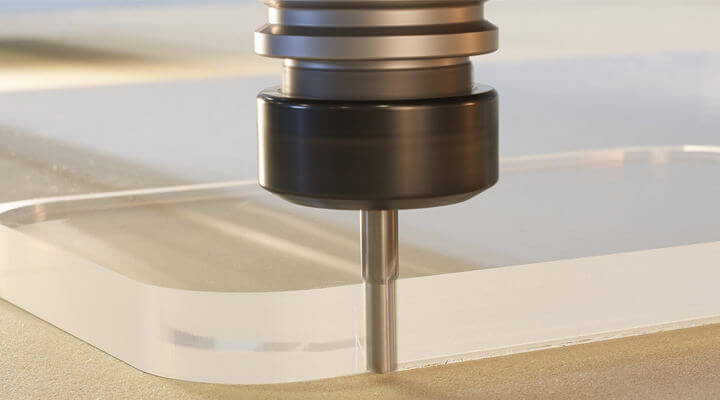
1.What is acrylic machining?
Acrylic materials are used to develop various products such as prototypes, jewelry, housings, and several other industrial products. Various processing operations such as turning, milling, drilling, finishing, etc. are performed using CNC machines in this process.
1) Some of the CNC machines used to cut acrylic materials are as follows:
- Acrylic engraving machine
- Acrylic milling machine
- PMMA etching machine
- Acrylic laser cutting machine
- Acrylic die cutting machine
- Acrylic micro laser cutting machine
2) Acrylic processing material selection
Acrylic is basically divided into two types, cast acrylic and extruded acrylic.
- Cast acrylic – produced by casting polymer resin into a mold. This manufacturing process produces less internal stress and is suitable for use as laser cutting material and CNC processing material.
- Extruded acrylic – In this method, the poly resin is pressed between a set of steel dies to produce large-sized sheets.
The material thickness of the above methods ranges from 1.5 to 25 mm. Compared to cast acrylic, extruded acrylic is more brittle. We only recommend that you choose cast acrylic for CNC machining purposes.
3) Advantages of choosing acrylic
The reasons for choosing acrylic for machining are as follows:
- It has an absolute impact on strength, this material is 5 times stronger than glass
- Excellent transparency among all engineering materials
- Acrylic is durable, sustainable and UV resistant
- Good electrical and thermal insulator
- Lightweight and easy to machine
- Provides excellent surface finish
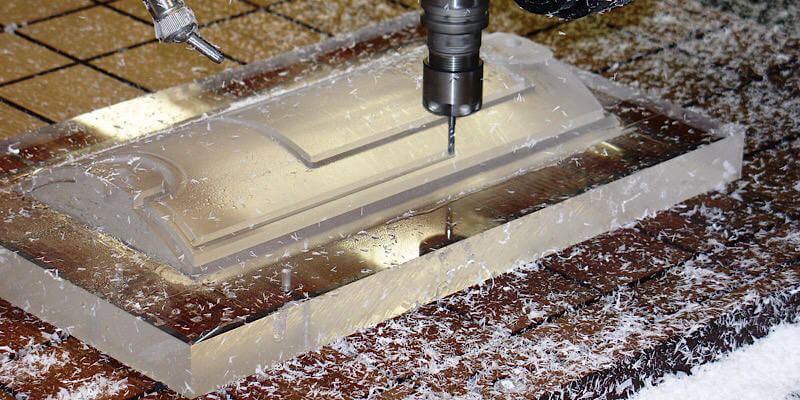
2.Tool Selection for Acrylic Machining
When working in a machine shop, choosing the right tool for any machining process is one of the most important tasks in performing CNC machining operations.
The tools used to machine acrylic materials are completely different from those used for metal machining. Specially developed tools for plastic machining can also be used for acrylic machining. Avoid using tools that were previously used for machining metal.
Some of the main tool attributes that should be considered are discussed below.
1) Tool Geometry
The ideal cutting tool for acrylic machining has a 5-degree cutting edge rake angle and a 2-degree clearance angle. The clearance angle is essential for a smooth machining process.
Many cutting tools have only a single flute for chip removal, while cutting tools (end mills) with up to 3 flutes can be used for CNC machining operations.
The main purpose of selecting an ideal tool geometry is to remove chips without getting stuck or causing any trouble. Some of the characteristics of less flute and more flute cutting tools are:
Less flute cutting tool:
- It can run at low feed rates
- Generates less heat during machining
- Less rigidity due to thin core material
- Poor surface finish with built-up edge (BUE)
More flute cutting tool:
- It runs at high feed rates
- Generates more heat during acrylic machining operations
- Stronger due to thicker core material
- Better surface finish compared to less flute cutting tools.
2) Using upcut, downcut and straight flute end mills
- Upcut end mill:
When using upcut end mill for machining operations, you will find that it provides smooth operation. The cutting tool pulls the chips away from the cutting position, thus reducing the risk of re-cutting. Up-cut end mills also help maintain the temperature of the cutting point. It requires rigid clamping, and thin plate parts are not suitable for this type of cutting tool.
- Down-cut end mill:
It is suitable for some special applications where the workpiece clamping is not very firm. Down-cut end mills are the best choice for plate processing.
- Straight groove end mill:
Straight groove cutting tools are not the best choice for acrylic processing because their impact force can cause the workpiece to fall out of the clamp. It is recommended to use high-helix tools for the best processing operation experience.
3) Tool materials and coatings
Carbide tools are usually used to process acrylic materials. For large-scale production, some manufacturers use diamond-coated tools for acrylic processing.
The material can also be processed with high-speed steel tools, but it will produce a rough surface. Most machine shops prefer to use carbide tools for cutting.
The coating will produce a slightly rounded cutting edge, making the tool less sharp. Therefore, it is recommended to use uncoated carbide end mills. Acrylic materials are softer and require sharp cutting tools to reduce the heat effect caused by friction.
To extend tool life, cutting tools are often coated with polycrystalline diamond, or PCD. If you require high work quality, consider using a polished end mill. This way, the chips will slide over the chip flute surface due to the smooth surface. This will provide a high surface finish to the workpiece.
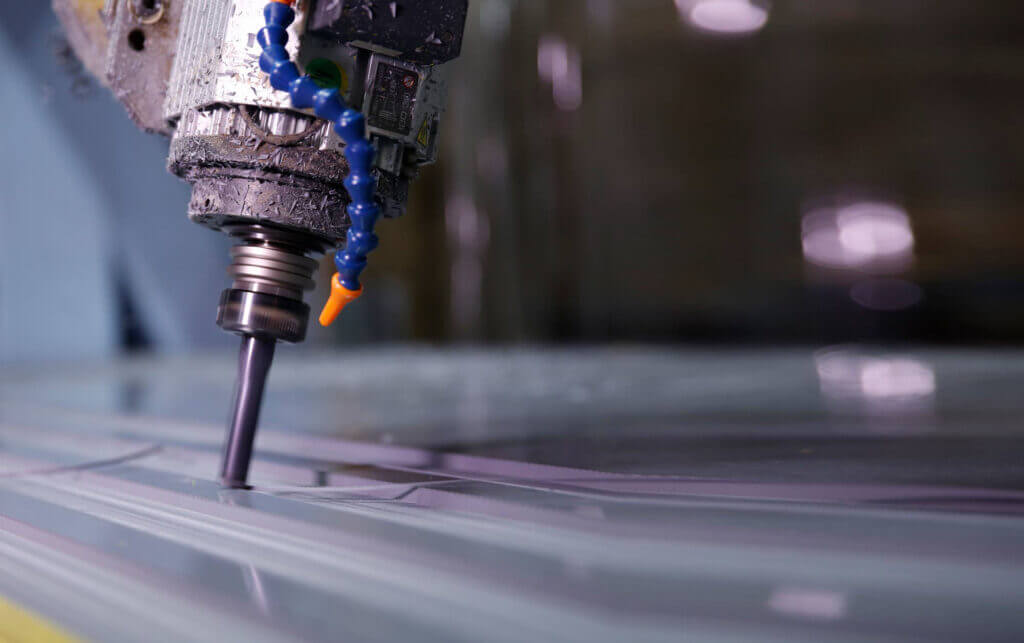
3.How to machine acrylic?
One of the basic principles of machining acrylic is to remove heat through the chips as quickly as possible. Acrylic has a low melting point of 320 degrees Fahrenheit, so high temperatures affect its cutting performance and surface quality. To reduce the effects of friction, the material is machined at a higher feed rate.
1) Milling
When performing milling operations, avoid using plunge engagement and use surface ramp motion instead. If you have no other choice, use a pecking cycle to reduce the length of the chips. These
chips will stick to the tool and melt the acrylic material through friction. It also blocks the path for the coolant to reach the cutting tool.
During milling, some of the following factors should be considered:
- The workpiece should be perfectly fixed
- The cutting tool should be sharp
- Continuous coolant supply
- Low rotation speed
- Surface finishing after milling
2) Turning
In turning operations, a single-point cutting tool moves along the rotating workpiece to remove unnecessary material. CNC acrylic turning operations are used to perform slotting, facing, boring, and external thread cutting.
Before turning operations, two of the most common problems should be considered:
- During continuous operations, the temperature of the workpiece will gradually increase. To avoid this problem, turning should be performed at a low speed and the workpiece should be cooled regularly.
- The second most common problem is cracks in the workpiece during the turning operation. Using a sharp cutting tool can solve this problem.
Turning operations on acrylic materials are really difficult. If you want to perform turning operations, then you should choose the side with the least material. If you are going to perform facing, it is best to first perform roughing with Z-axis feed and then perform light cutting in the X-axis.
3) Feed and Speed
Before machining any material, you should understand its cutting parameters. So that the machining operation can be carried out smoothly and comfortably.
We recommend that you operate the machine at a low speed and high feed rate. This provides the best chip control and prevents the material from sticking to the cutting tool.
Set the machine speed to 15000 – 18000 RPM and the feed rate should be two or three times the cutting speed. If the feed rate is too small, then the chips will start to flow back to the cutting piece, resulting in a poor surface finish.
4) Coolant
Due to the low melting point of acrylic material, the temperature should be kept low during the cutting operation. Some of the most commonly used coolants are oil mist and flood coolant.
If you are using a polishing tool or diamond tool, then air flow cooling should be your choice. If the coolant contains oil, make sure it does not react with PMMA.
Using high-pressure coolant may be the right choice to remove chips from the cut. We recommend that you use a paper filter instead of a mesh filter to filter the coolant.
4.What is the best way to fix acrylic parts for machining?
Proper fixation of the workpiece on the machine is essential to achieve the desired product quality. Vibrations are generated during machining and if the workpiece is not clamped tightly, it can ruin the entire process. There are many ways to clamp the workpiece, depending on the size of the workpiece and the machining operation.
Small acrylic parts can be fixed using clamps and vises. If we are machining large parts, then we can fix them using glue or tape. Manual fixation takes time and increases downtime. To avoid any delays, we recommend that you purchase a vacuum holding table.
Perfect clamping will increase the efficiency of the work and also help maintain the quality of the product. DEK uses modern machines for acrylic machining so that the work can be done precisely. We are able to develop custom acrylic parts as per the requirements of our customers.
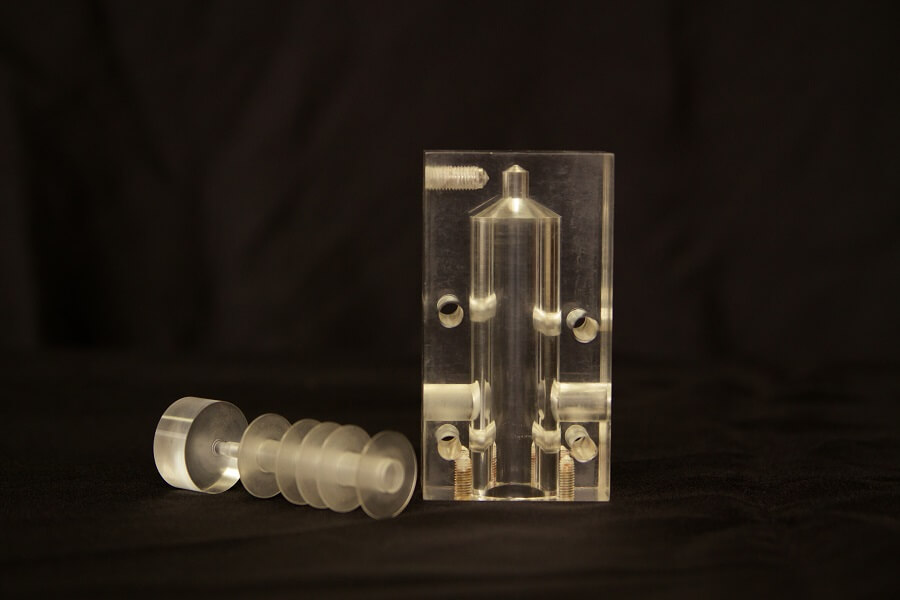
5.Finishing Methods Used in Acrylic Machining
These are some of the finishing techniques used to finish CNC machined acrylic parts.
1) Polishing
This is the most widely used method of finishing acrylic parts. By polishing, you can easily remove visible marks on the surface of the workpiece. A perfectly polished part will give a shiny appearance.
2) Texture finishing
It is also commonly used for finishing CNC machine acrylic parts. Texture finishing is done by sandblasting. We can produce various types of textures using this technique.
3) Flame polishing
This method is also used to produce a clear, glossy surface for acrylic products. But there are some disadvantages to using flame polishing. One of them is that it creates tension in the material, which can cause cracks in the workpiece.
4) Acrylic engraving
Engraving is another CNC machining process that engraves textures or patterns on the surface of the workpiece. Acrylic engraving is similar to milling, but uses different cutting tools.
With modern technology, you can easily engrave complex acrylic parts with extreme precision and accuracy. It can also be engraved using a laser engraver. To make the pattern clearly visible, some paint can be filled in the engraved part.
Xavier also provides customers with cost-effective and high-quality engraving services, and the products designed and developed by its processing and manufacturing company are widely used by manufacturers around the world.
6.Difficulties that may be encountered during acrylic machining
These are some of the difficulties that you may encounter during acrylic machining.
- Cloudy appearance – Before using coolant or any solvent for cleaning, make sure they will not react with acrylic material. Some solvents or oil-based coolants may react with the part or make it cloudy.
- Sticky chips – Continuous operation will produce some sticky chips. This is a serious safety hazard for both the operator and the equipment. Please do everything possible to avoid these chips.
- Overheating – When machining acrylic parts, temperature requirements must be strictly followed. High-speed cutting with low feed rates will generate heat, which will cause the workpiece to melt. To avoid overheating, try to machine at lower speeds and higher feed rates.
- Poor surface quality – You may encounter the problem of poor surface quality. To avoid this problem, try to use a sharp-edged cutting tool with coolant. It can reduce the friction effect and achieve excellent surface quality.
- Sticky chips – Some chips will stick around the machine tool or the processing location. This will cause the temperature in the workplace to rise. To avoid chip sticking, use a polished cutting tool at a low speed and a higher feed rate.
- Machine Failure – It is necessary to perform preventive maintenance on CNC acrylic machines to avoid any malfunction or breakdown. Processing in adverse environmental and operating conditions can also lead to machine failure.
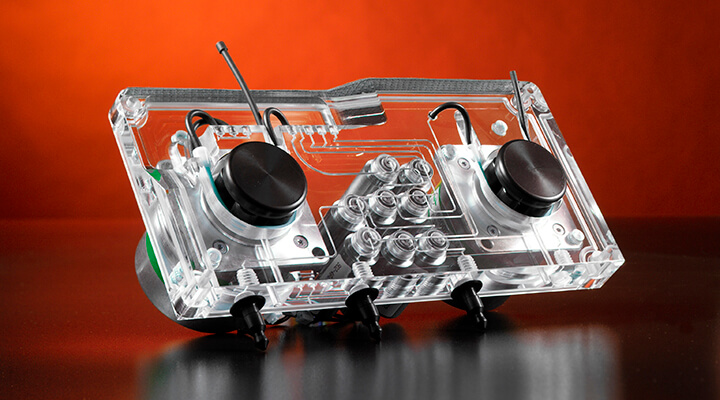
7.Applications of Acrylic Products
Acrylic products are widely used in various industries. Here are some typical applications of acrylic products.
1) Glass Replacement
Due to its excellent transparency, this material is often used as a glass substitute in various automotive, aerospace and optical industries. In the automotive industry, PMMA is mainly used to develop headlights with complex geometries. It is also used to manufacture high-quality eyeglass lenses.
2) Medical
Due to its excellent biocompatibility, it is highly recommended for various medical applications. It can be used as a subcutaneous filler in cosmetic surgery and as a bone cement in orthopedic surgery.
3) Rapid Prototyping
Acrylic materials are also widely used to develop prototypes due to their affordable and sustainable prices. Various manufacturing industries are using acrylic for rapid prototyping through subtractive processing methods.
4) Consumer Products
It is widely used in various consumer products such as electronics, furniture, musical instruments, etc. CDs and DVDs are also made of acrylic material.
8.Conclusion
In the above article, we discussed acrylic machining in detail. We found that cast acrylic is a suitable material for acrylic machining and multiple CNC machines are used in the machining process.
We concluded that acrylic machining is widely used in various manufacturing industries. Cutting tools with more grooves are suitable for machining purposes. The ideal machining operation is performed at low speeds and higher feed rates. To avoid overheating, polishing cutting tools with coolant are used in the process.
This article also discussed some appropriate ways to fix acrylic parts in the machine. We mentioned some techniques suitable for finishing acrylic materials such as polishing, texture finishing, and flame polishing.
The most common problems and their solutions are also discussed in detail. Finally, some applications of CNC acrylic machining are also mentioned. Now you have enough knowledge about acrylic machining. After reading this article, you can easily set the ideal operating conditions for machining acrylic products.
If you are looking for an experienced CNC machining manufacturer, Xavier is your ideal choice. The Xavier team is well-equipped to provide high-quality CNC machining solutions. If you need more information or to discuss your machining needs with us, please feel free to contact us.
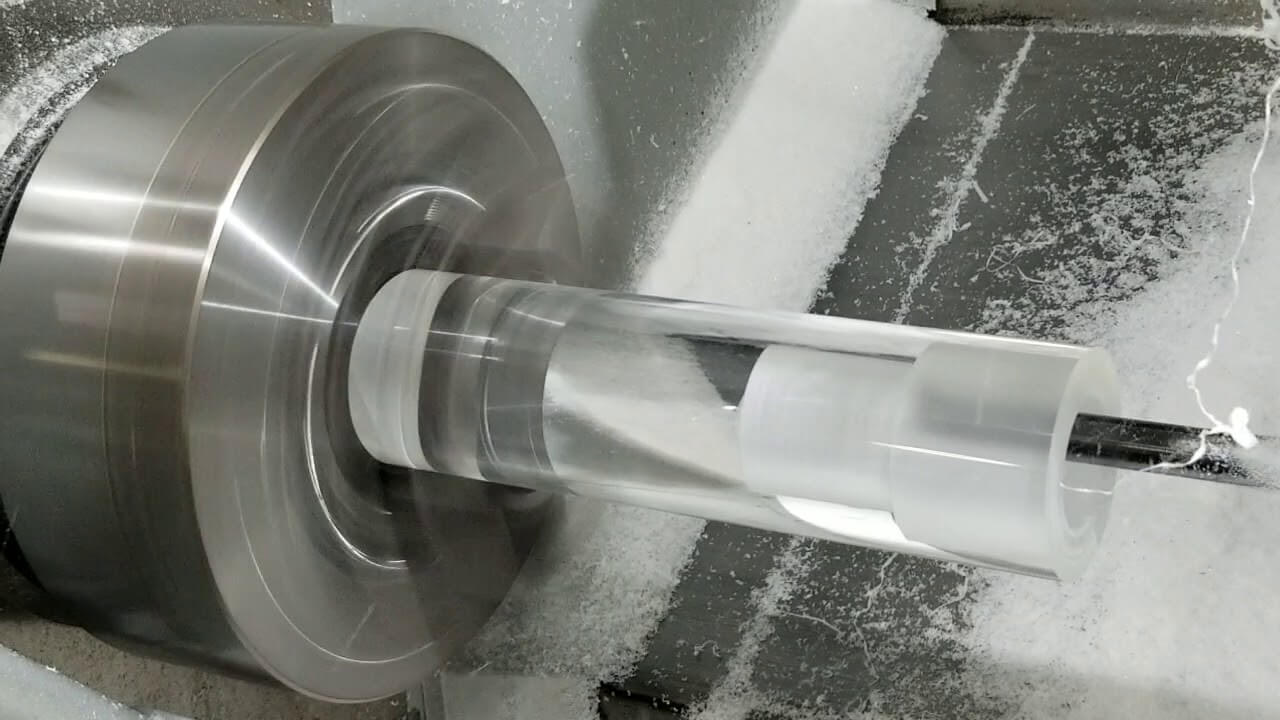
2 Comments
I congratulate, it seems magnificent idea to me is
Yes, the answer almost same, as well as at me.